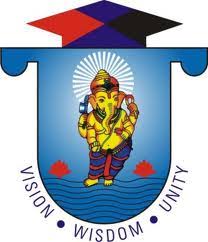All About Internal Order in SAP - Shikshaglobe

Inward orders are typically used to plan, gather, and settle the expenses of interior positions and errands. The SAP framework empowers you to screen your inner orders all through their whole life-cycle; from starting creation, through the preparation and posting of the multitude of real expenses, to the last settlement and documenting.
Why Internal Order is Required?
Interior orders portray individual positions inside a controlling region. Orders support activity arranged arranging, checking, and designation of expenses. You can utilize inward requests to:
Screen inward positions settled to cost focuses (above orders)
Screen inward positions settled to fixed resources (venture orders)
NTT Admission
Balancing postings of gathered costs determined in CO (accumulation orders)Show the expense controlling pieces of Sales and Distribution client not influence the center business of the organization (orders with incomes)We can utilize above orders for nitty gritty controlling for a specific item or movement. All costs connected with this item or movement are appointed to the significant request. We can involve orders as inner expense objects.
All About Internal Order in SAP
In SAP, an Internal Order is a cost object used for tracking
and controlling costs within an organization. Internal Orders are essential for
managing various types of activities, projects, or tasks, and they play a
crucial role in SAP Controlling (CO) module. Here's a comprehensive overview of
Internal Orders in SAP:
1. Purpose of Internal Orders:
- Internal
Orders serve as a tool for managing and monitoring costs associated with
specific activities, projects, or initiatives.
- They
help organizations allocate and track expenses accurately, enabling better
cost control.
Experience the difference
2. Types of Internal Orders:
- Real
Orders: These are used for tracking actual costs incurred during a
project or activity.
- Statistical
Orders: These are used for collecting statistical data, such as
quantities produced or hours worked, without tracking actual costs.
3. Characteristics of Internal Orders:
- Cost
Element: Each Internal Order is associated with specific cost elements
that define which types of costs can be assigned to it.
- Controlling
Area: Internal Orders are created within a specific controlling area
in SAP.
- Budget:
Budgets can be assigned to Internal Orders, allowing for cost control
against planned values.
- Responsible
Person: An individual or department responsible for the Internal
Order's execution can be assigned.
4. Internal Order Lifecycle:
- Creation:
Internal Orders are created in SAP using transaction codes like
"KO01" (for real orders) or "KO03" (for statistical
orders).
- Planning:
Budgets and cost plans can be assigned to Internal Orders to estimate
costs.
- Execution:
Actual costs are incurred as activities or tasks associated with the
Internal Order are performed.
- Monitoring:
Costs are continuously monitored against budgets and plans.
- Settlement:
At the end of the project or activity, costs can be settled to cost
centers, assets, or other objects.
- Closure:
The Internal Order is closed once its purpose is fulfilled, preventing
further cost postings.
NTT Admission
5. Integration with Other SAP Modules:
- Cost
Accounting: Internal Orders are closely integrated with cost
accounting functions in SAP, allowing for detailed cost tracking.
- Project
Systems (PS): Internal Orders are often used in conjunction with SAP
PS for more complex project management.
- Asset
Accounting: Costs from Internal Orders can be settled to assets.
- Controlling
Modules: Integration with other SAP CO modules like Cost Center
Accounting, Profit Center Accounting, and Product Costing.
6. Reporting and Analysis:
- SAP
provides various standard reports for analyzing Internal Order data,
including cost reports, budget vs. actual analyses, and variance reports.
- Custom
reports and dashboards can be created to meet specific reporting
requirements.
Take the next step>>>
7. Benefits of Using Internal Orders:
- Cost
Control: Internal Orders enable organizations to track and control
costs with precision.
- Performance
Measurement: They provide data for evaluating project or activity
performance.
- Budget
Adherence: Budgets assigned to Internal Orders help organizations stay
within financial limits.
- Decision
Support: Data from Internal Orders aids in informed decision-making.
- Compliance: Internal Orders facilitate adherence to accounting and reporting standards.
For instance assuming the organization take part in 2 exchange reasonable to target new clients .
Without Orders , we post costs for the two exchange fairs straightforwardly to the expense community answerable for supporting these occasions. As outer expenses and inside exercises have similar expense components on similar expense place, we can only with significant effort figure out which occasion made which costs.This implies that we can't make any further examinations for correlation purposes.
A further benefit is the wide assortment of arranging and planning capabilities accommodated orders.
Likewise with Orders , every occasion accepts its own above request, the expenses are gathered independently. The settlement capability allots the request expenses for the expense place answerable for supporting the exchange fairs, which furnishes you with the hierarchical perspective on the expenses. This empowers us to break down and look at the consequences of the exchange fairs, even after the settlement has been made.
Step by step instructions to Create Creating Internal Order
See also here -->>
Enter Transaction code KO04 (Order Manager) in the SAP Command Field
About Internal Order in SAP
In the following screen ,Press 'Make' button in the application toolbar to make another interior request
Keep reading
In the following exchange box, Select the request type to be made
In the following screen, Enter the accompanying information
Enter the Company Code
Enter the Business region
Enter the Object Class of the Order
Enter the Profit Center
Enter the Cost Center answerable for the inner request
About Internal Order in SAP.
See also here -->>
Read More
| All About Internal Order in SAP |
| How to assign Cost Centers to Profit Center in SAP |
| How to assign materials to Profit Center in SAP |











